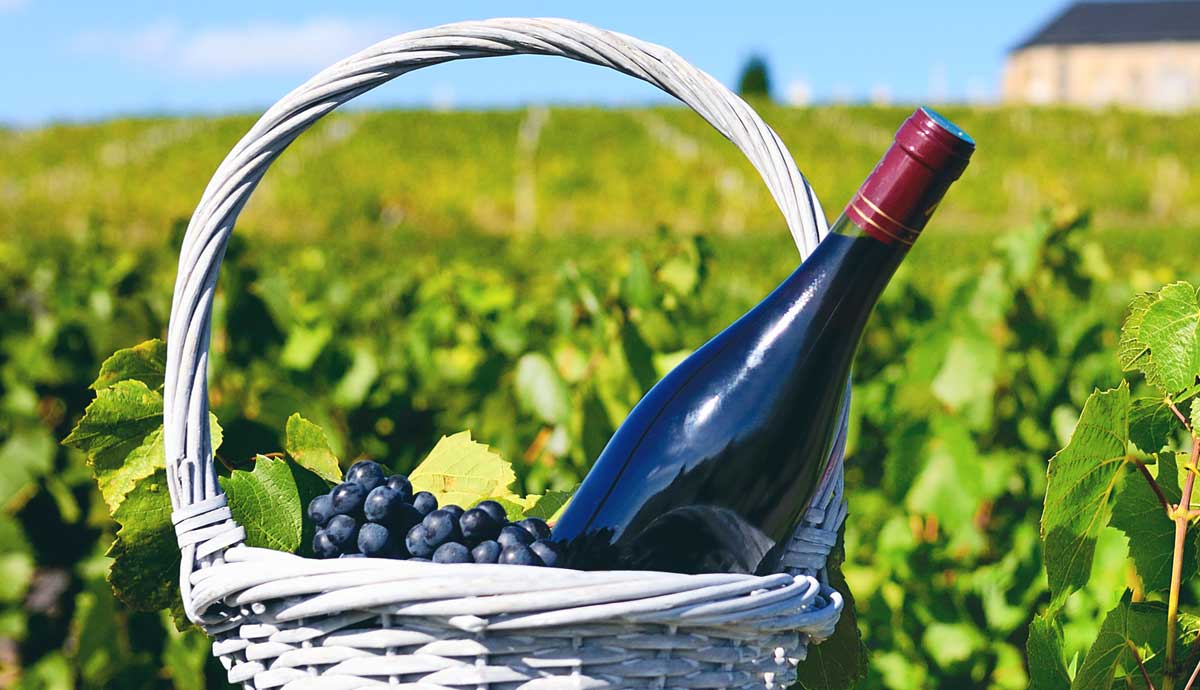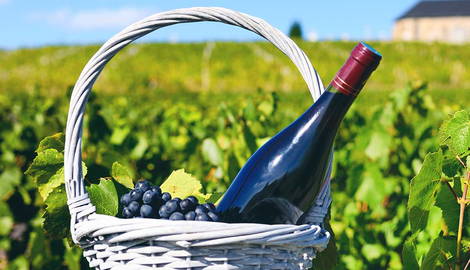
Ranking just behind Italy and Spain, France is the world’s third-largest producer of wine. The country has nearly every variety of wine imaginable, whether red, white, or rosé. Indeed, the image of French cuisine in the popular consciousness is practically synonymous with fine wine. Thousands of wineries exist across France, all offering something unique. The southwest region of Bordeaux is no exception to this rule. With its ideal climate and location between the Iberian Peninsula and the rest of Europe, Bordeaux wine has been sought after since antiquity.
Bordeaux Wine: Its Ancient Beginnings

Both in Europe and around the world, the Bordeaux wine region of France is practically synonymous with contemporary fine wines. Its viticultural history goes back to the Roman era when winemakers focused on both red and white varieties. The Roman author and military leader Pliny the Elder is the first commentator known to remark on vineyards in Bordeaux. At the time, Bordeaux was part of the territory of Gaul, which had fallen to Julius Caesar in the 1st century BCE.
In the late Roman era, the famous poet Decimius Magnus Ausonius owned a vineyard in Aquitaine (present-day Bordeaux). Ausonius cultivated local wine varieties and wrote about them in his poems. A modern winery, Château Ausone, now exists near the site of the ancient poet’s villa.
Bordeaux wine seems to have fallen into relative obscurity after the Roman Empire’s fall. During the Early Middle Ages, there wasn’t much of an international market for French wine. That would all change, however, by the 11th century. As European peoples reconsolidated themselves after the Roman collapse, Bordeaux wine came roaring back in popularity.
The Middle Ages and the Spread of Bordeaux Wine

In 1152, Duchess Eleanor of Aquitaine married the future King Henry II of England. Wine from Bordeaux was on the menu for their wedding. Thanks to the close political ties between the English and the French, Bordeaux wine progressed to develop into an international product.
At the same time, the wedding of Henry and Eleanor brought the Bordeaux region under English rule. The city of Bordeaux was one of the English Crown’s largest cities during the 12th century and the export of Bordeaux wine at this time catered mainly to England. Some trade also occurred with Wales, Ireland, and Scotland.
However, as it had done after the fall of the Roman Empire, the Bordeaux wine trade was forced into dormancy again after the 1300s. The Black Death plague devastated all of Europe. The Hundred Years’ War (1337-1453) only made things worse; it greatly disrupted all markets as England and France battled for supremacy. The French would ultimately come out on top and evict the English from Bordeaux. With the region now firmly under French royal control, a new chapter in Bordeaux wine history would begin.

During the medieval period, the Catholic Church also had a vested interest in the French wine market. Monasteries in Bordeaux often administered vineyards, in a similar fashion to those in parts of Germany that brewed beer. The Church reigned as France’s largest single landowner until the French Revolution when a swift crackdown on religious institutions stripped it of most of its possessions.
Changes in the 17th Century and Beyond

If Bordeaux wine had a moment in the sun during the late medieval era, then its fortunes exploded during the 1600s. This was made possible by the work of the French as well as their European collaborators.
Dutch planners and engineers drained the Médoc marshlands that bordered the Gironde River. This allowed French administrators to transform a previously unsuitable area into a major viticultural powerhouse. However, at the same time, the legal wine trade between Bordeaux and England did decline. As the War of the Spanish Succession raged in the early 1700s, selling wine across the English Channel became highly dangerous. While the smuggling of wine over the channel persisted, the English would not regain their (legal) appetite for Bordeaux wine until the early 19th century.

Furthermore, the 19th century also witnessed the systematic classification of Bordeaux wine by the French government. In 1855, authorities in Bordeaux devised a new classification system for local wines of international interest. The ruler of France at the time, Napoleon III, was determined to impress global high society. Bordeaux wines were organized into “growths” based on quality and price. Red wines from the Médoc subregion dominated the list.
The wine industry in Bordeaux received an additional boost following the arrival of the famous Rothschild banking family in France during the 1800s from Germany. Some of its most prominent members became intrigued by the wine market. James Mayer de Rothschild purchased the old Château Lafite in 1868. His sons and grandsons expanded their family’s wine business even further. Another, even older winemaking family in Bordeaux was the Ségur family, active since the 1600s.
The Phylloxera Infestation of the Late 19th Century

The late 19th century witnessed the most significant challenges in the history of Bordeaux wine yet faced. Previously, disruptions in the market had largely political or social roots. Never before had the cause of France’s viticultural misfortune been biological. As it turned out, the French had most probably inadvertently brought an infestation of foreign insects back to France, as American vines were brought to Europe.
Originally from the Americas, these creatures–called phylloxera–destroyed the roots of common European grape vines. Their reproduction cycle meant that at least three generations were born every growing season. Entire vineyards across France were decimated beginning in the 1860s–just ten years after another disease–powdery mildew–had ravaged the country. Bordeaux wine, in particular, was devastated. French scientists eventually identified the insect culprits, but a solution to the pestilence remained elusive for decades.

In the 1890s the fortunes of Bordeaux wine were restored. The breakthrough came when plant scientists discovered that phylloxera didn’t consume the roots of American grapevines–only the leaves. Plant scientists started a selective breeding process called “grafting,” in which they could effectively hybridize French and American vine roots to resist the infestation. After causing incalculable damage to the French economy, the “Great French Wine Blight” seemingly faded away.
Phylloxera still exists in the modern world. Grafting may have saved the French wine industry, but plant pathologists have yet to come up with a cure. The exact reason why phylloxera hit 19th-century France’s vineyards remains hard to determine to this day.
20th Century Developments

The 20th century saw the French wine industry both struggle and prosper. The Bordeaux wine trade thrived during the 1920s, but it crashed as a result of the Great Depression and the Second World War. Bordeaux-based merchants continued to produce wine, yet both supply and demand suffered between 1929 and 1945. When Nazi Germany invaded France in 1940, German officials attempted to commandeer the country’s wine markets for German benefit.
Both the interwar and postwar eras saw the French government commit to further efforts to regulate French wines. In 1936, regulators created the Institut National des Appellations d’Origine (INAO). The INAO implemented classification systems that remain in force today. These regulations specify everything from what region a given wine was produced in, to what varieties of grapes were used during production. The most well-known classification system used for French wines is the Appellation d’Origine Contrôlée (AOC). More than 360 AOCs exist across France.
Bordeaux Wine Today: What’s Currently in Vogue

Having offered an overview of the history of Bordeaux wine, an important question remains: What kinds of wine does Bordeaux produce today?
The Bordeaux area remains one of modern France’s premier wine regions. Its wine repertoire is dominated by red varieties. Wine lovers will recognize cabernet sauvignon, malbec, merlot, and cabernet franc as staples of Bordeaux. The region does produce some sweeter white wines as well, but these make up a tiny percentage of Bordeaux’s overall wine production.
Bordeaux wine also continues to maintain a devoted international clientele. In 2021, Bordeaux sales in the United States alone jumped by 24 percent. This growth was made possible partially due to the Biden administration’s lifting of tariffs on French wine exports. If one thing is clear, it is that whether crafted by large wineries or small-scale farmers, Bordeaux wine remains in high demand among drinkers and enthusiasts worldwide.








